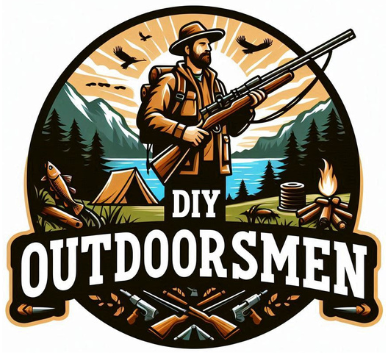Contents
- 1 Understanding Camera Gear Essentials for Hunting Photography
- 2 Building Your Hunting Photography Kit
- 3 Key Camera Features to Prioritize
- 4 Lenses: Choosing the Right Ones for the Hunt
- 5 Protecting Your Gear in Tough Environments
- 6 Staying Stealthy in the Field
- 7 Practical Extras for a Smooth Experience
- 8 Ethical and Safe Practices
- 9 Handy Tips for Challenging Conditions
- 10 Common Questions About Camera Gear for Hunting Photography
- 11 Final Thoughts
Preparing for hunting photography combines both excitement and patience. Getting close enough to capture wildlife without disturbing them is challenging, and using the right camera gear can make the experience more rewarding for you and the animals.
QUICK LOOK: Camera Gear for Hunting Photography
- DSLR or Mirrorless Camera: I rely on models with fast autofocus and weather-sealed bodies, which hold up well against dust and unexpected rain. The Canon EOS R6 and Nikon Z6 are great examples of cameras that take tough conditions in stride.
- Telephoto Zoom Lens: A telephoto lens (like a 70-200mm or 100-400mm) lets me photograph animals from a respectful distance. If I’m expecting long-range scenes, I pack a 400mm or 500mm lens.
- Wide-angle Lens: Useful for capturing the full atmosphere of the hunting landscape, especially if the area is scenic or if I want to show the animal’s environment.
- Sturdy Tripod: A lightweight but stable tripod keeps images sharp, especially at dawn or dusk when there isn’t much light. I use camouflaged tripod leg covers to reduce glare and help my setup stay low-key.
- Action Camera: For fast shots from unique perspectives, an action camera like a GoPro Hero or DJI Osmo Action is a handy backup. I often mount mine to my backpack for hands-free video.
- Camcorder (Optional): If documenting hunts on video is the goal, a small camcorder with solid optical zoom is worth considering. The Canon Vixia line is reliable and easy to carry.
Over the years, I’ve refined my kit to make sure I’m always ready to get the shot, no matter the conditions. Here, I’ll break down the gear I rely on for hunting photography, along with tips to help you build a setup that works out in the field.
Understanding Camera Gear Essentials for Hunting Photography
Hunting photography calls for a thoughtful approach to equipment. Wildlife rarely waits for the perfect moment, so my camera bag usually holds gear that keeps up with unpredictable action and rugged terrain. Good image quality and reliable autofocus are only the beginning.
Portability is especially important since hiking long distances with heavy equipment is tough. There are several camera types I’ve tested in the wild. DSLR and mirrorless cameras are my top picks for most trips because they offer sharp images and can switch between different lenses.
Sometimes I add an action camera to capture wide shots or set up secondary angles, but these are mostly for extra variety and not my main tool. Camcorders work well for longer hunting videos, especially for deer hunts, if I want clear zoom and easier handling for video focus. Every camera type has its strengths, but matching the system to your hunting environment and style is what matters most.
Building Your Hunting Photography Kit
Packing light and smart matters, especially if I’m spending hours tracking in harsh conditions. Here’s my standard kit and why each piece counts:
- DSLR or Mirrorless Camera: I rely on models with fast autofocus and weather-sealed bodies, which hold up well against dust and unexpected rain. The Canon EOS R6 and Nikon Z6 are great examples of cameras that take tough conditions in stride.
- Telephoto Zoom Lens: A telephoto lens (like a 70-200mm or 100-400mm) lets me photograph animals from a respectful distance. If I’m expecting long-range scenes, I pack a 400mm or 500mm lens.
- Wide-angle Lens: Useful for capturing the full atmosphere of the hunting landscape, especially if the area is scenic or if I want to show the animal’s environment.
- Sturdy Tripod: A lightweight but stable tripod keeps images sharp, especially at dawn or dusk when there isn’t much light. I use camouflaged tripod leg covers to reduce glare and help my setup stay low-key.
- Action Camera: For fast shots from unique perspectives, an action camera like a GoPro Hero or DJI Osmo Action is a handy backup. I often mount mine to my backpack for hands-free video.
- Camcorder (Optional): If documenting hunts on video is the goal, a small camcorder with solid optical zoom is worth considering. The Canon Vixia line is reliable and easy to carry.
Key Camera Features to Prioritize
I pay careful attention to certain camera features that make a big difference in the wild. Here’s what I look for:
- Fast Autofocus: Wildlife moves quickly. A camera with fast and accurate autofocus gives me a better chance at catching animals in action without missing the shot.
- Burst Mode: Rapidfire shooting captures a series of photos in seconds. This is especially helpful when photographing moving targets or unpredictable action.
- Weather Sealing: Dirt, dust, and moisture are a given when hunting. Cameras and lenses with weather sealing last longer and offer more reliability under stress.
- Silent Shutter: A silent or electronic shutter is really important for staying discreet. The quiet operation allows me to photograph animals without startling them.
- Battery Life: Cold and continuous shooting drains batteries fast. I always pack extras and keep them warm in my jacket pockets to stretch their use.
Lenses: Choosing the Right Ones for the Hunt
The right lenses set apart snapshots from eye-catching photos. My main lens is always a telephoto with a broad focal range, like a 70-200mm for general wildlife or 100-400mm for extra reach.
These let me fill the frame while keeping a respectful distance from the animal. For early morning or late evening light, a lens with a wide aperture (like f/2.8 or f/4) keeps the image clear and smooths out any distractions in the background.
Prime lenses with fixed focal lengths, such as a 300mm f/2.8, are bright and sharp but less flexible than a zoom when tracking multiple animals or scenes with changing distance. For broader shots, I bring a wide-angle lens (as low as 16-35mm) to show the forest or provide scenic context for the hunt. Having this flexibility for both close and wide compositions means I can get creative with every outing.
Protecting Your Gear in Tough Environments
Hunting conditions are rarely gentle on equipment. I make sure my camera and lenses have weather sealing, and I always carry lens covers, rain sleeves, and extra protective padding. For trips that might get wet or muddy, I use waterproof dry bags.
Camera bags designed for outdoor use help organize equipment and add another layer of protection in case of unexpected drops or bumps. Lens cleaning wipes and a blower brush are always part of my kit.
Dust and dirt can get into everything out there, and a quick clean keeps images crisp and helps prevent sensor spots that could ruin a whole series of photos. A little extra care goes a long way toward keeping gear functional in rough country.
Staying Stealthy in the Field
Blending in is crucial for wildlife photography while hunting. I wear camouflage clothing or earth-toned gear and use neutral covers for both my camera and tripod. Camouflage tape helps wrap shiny or reflective parts of equipment so they don’t catch sunlight and spook wildlife.
If my camera has a silent mode, it’s always turned on before I start. Any unnecessary noise can make wildlife wary, costing me precious opportunities for the shot I’ve been waiting for. A good tripod can be more important than many realize.
Not only does it keep things steady, but camouflaged tripods or tripod covers prevent the sun from reflecting off metal parts, keeping the entire setup discreet and helping me stay hidden in plain sight.
Practical Extras for a Smooth Experience
Preparation can save hours of hassle in the field. Here’s what I always consider useful to pack:
- Extra Batteries and Memory Cards: Running out of power or storage can end a trip early. I always bring more than I think I’ll need.
- Filters: Polarizing and UV filters help manage glare and boost contrast, especially near water or on bright days.
- Trail Cameras: For scouting, trail cameras catch animal movement patterns before I even enter the area. These help me pick better spots and times.
- Spotting Scopes and Mounts: They are great for locating animals at a distance before getting my camera ready. Some scopes come with adapters for direct camera attachment.
- High-quality Camera Bag: A well-padded bag with extra compartments makes accessing and organizing gear faster when action comes up unexpectedly.
Ethical and Safe Practices
Respecting wildlife matters for both safety and responsible photography. I always keep a safe distance and avoid disturbing animals’ routines. Local hunting regulations often apply to photographers as well.
Gear that’s easy to pack up and move helps minimize my footprint and lets me leave an area exactly as I found it. If I ever use staged or captive animal photos, I will make a note of it in the description to stay transparent.
Always pack out any trash, and never damage plants or habitats just to get a better angle. Keeping nature intact supports conservation and makes sure others can enjoy these places in the future.
Handy Tips for Challenging Conditions
- Weight vs. Performance: Lighter equipment is easier to hike with, but sometimes heavier, sturdier gear offers better stability and image quality. I balance this by choosing a mix of compact and essential items and skipping anything that hasn’t seen regular use.
- Timing for Best Results: Early mornings and late evenings provide dramatic light and active wildlife, but these times can be chilly and damp, so I pack weather-resistant accessories and layer up.
- Quick Setup: Preassembling camera and tripod attachments, or having quick-release plates ready, helps me stay prepared and not waste critical seconds when something interesting happens.
Common Questions About Camera Gear for Hunting Photography
Many people ask me how to pick their kit or if their gear is up to the task. Here are some questions I get most often:
Can I use my regular camera for hunting photography?
Many standard DSLRs and mirrorless cameras work well, as long as you’ve got at least one telephoto lens and can protect your gear from the weather. Weather sealing and battery life are the most common weaknesses in nonspecialized equipment.
How far can I expect to shoot animals without scaring them?
That depends on both your lens and the animal’s behavior. Telephoto lenses (300mm or longer) are great for taking shots from a safe distance that won’t spook wildlife. Patience and moving quietly are just as useful as the right lens.
Do I really need a tripod?
For hunting photography, I find a tripod very helpful, especially with long lenses or in low light. If you’re hiking long distances, a lightweight model or a monopod can make things easier to carry while still providing support.
What about action cameras and other small devices?
Action cameras give fun points of view and are easy to attach to your clothing or gear. That said, I stick with my main camera and lens for most serious photos, and use the action camera for bonus shots only.
Final Thoughts
Great hunting photos come from being prepared, understanding wildlife, and having gear you can trust. The right equipment lets me catch the subtle beauty of nature and memorable hunting moments while staying safe and respectful.
Spending some extra time researching and investing in the proper kit means I can focus on enjoying the hunt and sharing the adventure through my photos.
Most Recent Articles:
- 5 Best Public Land Mule Deer Hunting In Colorado
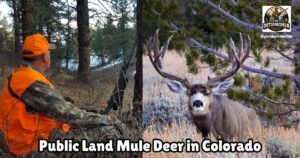
- Bow Hunting For Mule Deer
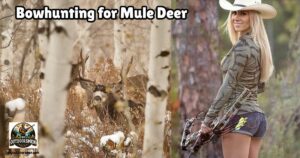
- Best Public Land Mule Deer Hunting
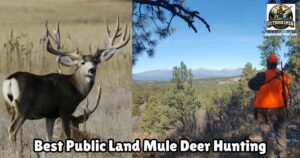
- Drone-Based Scouting Services For Mule Deer
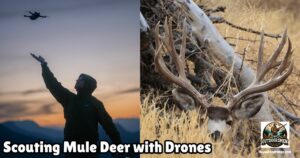
- Late Season Mule Deer Hunting Tips
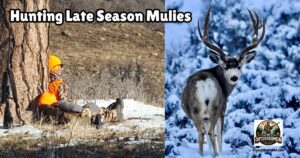
- 8 Tips for Dealing with Hunting Pressure While Mule Deer Hunting
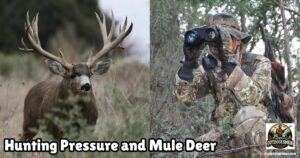
As always, stay safe, enjoy the journey, and please try to leave it cleaner than you found it. If you have any comments, questions, ideas, or suggestions, please leave them in the comment section below, and I’ll get back to you ASAP. You can follow us on YouTube: Man Art Creations for videos of our DIY Adventures.
P.S. Thanks so much for checking out our blog; we really appreciate it. Just so you know, we may receive a commission if you click on some of the links that appear on our site. This helps us keep our content free and up-to-date for everyone. We appreciate your support!
